Evaluating a horse's back for saddle fit - part two
We are no longer building saddle trees, but we have two videos about how Western saddles fit horses available on our westernsaddlefit.com website.
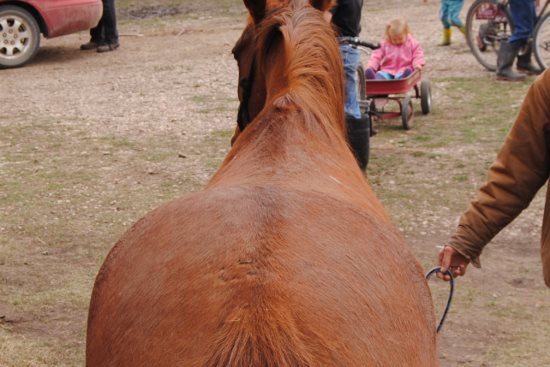
In the first part of this three part series, we discussed the types of things we look for from the side when we are trying to decide what specs to use for a horse of this body type. Today, I will show you what we are wanting to learn when we look at a horse from behind.
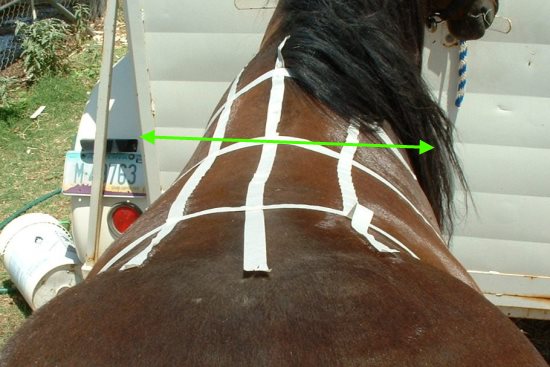
First off, how wide is the body of the horse? The width of the body helps us determine the spread between the bars that is needed. When determining the distance between the bars we, along with every other hand made tree maker we know, use hand hole width not gullet width. While gullet width is the commonly used measurement, it actually is a very inconsistent place to measure. Bars which are spread the same distance apart can measure quite differently there depending on fork stock thickness or the shape of the front of the bar. Conversely, bars spread different distances apart may actually measure the same there because of the same two factors. For pictures and a fuller explanation, please see our “Why we use hand hole width instead of gullet width” page.
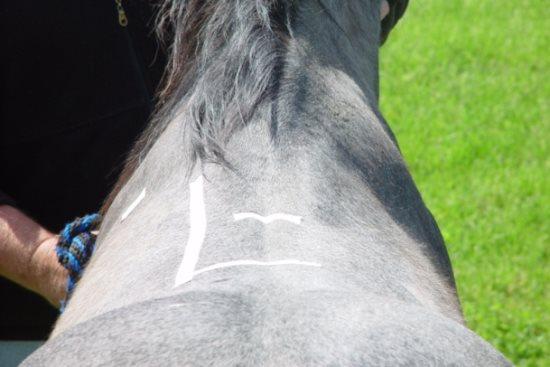
This horse is a small Arab. We can’t spread the bars very far apart on him or two things will happen. The first is that since the tree will be too wide for him, it will “fall down” in front, tilting forward and lifting the back of the saddle off the horse. The second is that the bottom edge of the bars will often end up sticking out into space away from the horse since they are wider than the horse. Our hand hole widths vary from 3 ½” to 4 ½”, with the majority being 4” or 4 ¼” wide. This horse would benefit from a 3 ¾” hand hole width tree. (By the way, this horse appears to have some atrophy of the muscles behind the shoulder blade as seen by the really flat, angled look of the muscles there. If this horse had normally rounded muscles, his back would be rounder.)
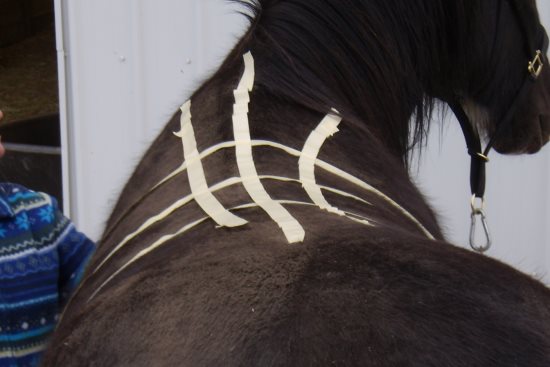
This horse is a Clydesdale. (Yes, I am picking the extremes. It is so much easier to make a point with extremes than with medium range horses!) This is a big horse and its back is really broad. We don’t make many 4 ½” hand hole trees, but this horse is a candidate for one of those. We want to stay away from the dorsal spinous processes of the vertebrae and she has the breadth of back to support bars spread farther apart.
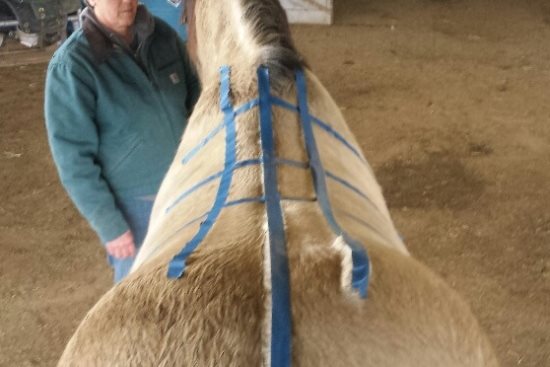
The second thing we evaluate is how steep the area behind the shoulder blades is. We often call this the “wither pocket” area, and we look at this area to determine the bar angle. The steeper the horse, the narrower the angle needed. The blue tape crossways at the front outlines the area we are looking at.
Please note – there is no way to measure an “angle” on a horse and correlate it to a number on a tree. And there is no way to measure an “angle” on a tree either. Please see our “Bar angles – why the numbers are meaningless between makers” page for further explanation. We again are talking about visual variations, not exact measurements.
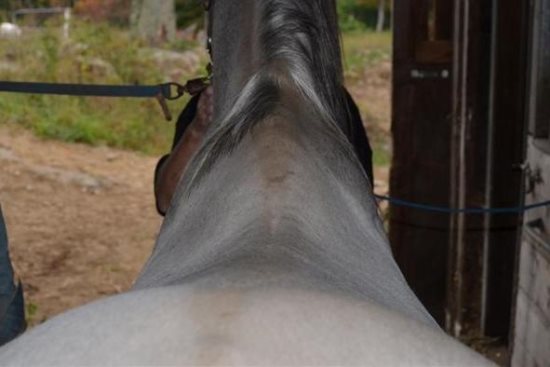
This is a narrow bodied horse with a really narrow angle as well. One of the few trees we have built at 87 degrees was for the people who own this horse and others like him.
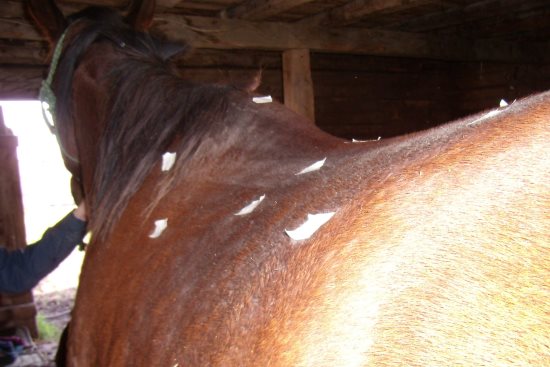
Here is another horse with a really narrow angle to her wither area. However, she is well over 16 hands tall. Narrow and small don’t have to go together. Nor do breeds always correlate, as this is a registered QH. (I apologize that we don't have a picture from the back for this horse, but it is hard to get pictures of more than just the croup and tail of a tall horse!!)
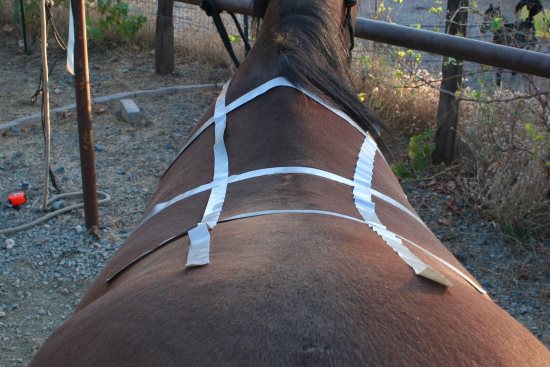
Here is an example of a horse with flatter or wider withers, whichever term you prefer. This is not a large horse, like the Clydesdale above, but she has a flatter angle to her wither area, and ideally would use a wider angle to her tree.
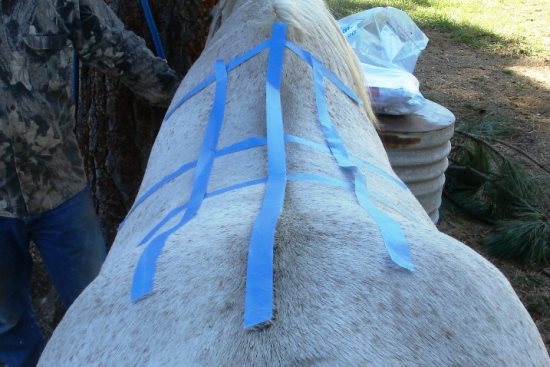
And here is one of the many that are in the more common middle ground of the bell curve.
We have made trees with angles of 87, 90, 93, 95, 98 and 106 degrees. But please remember that the number comes from a measurement we use as we make the tree and is meaningless as far as any measurement on the horse goes.
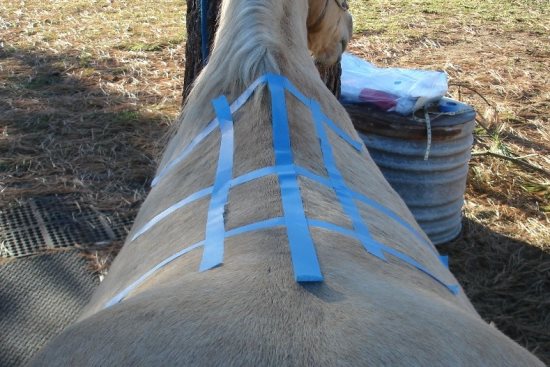
The third thing we can see from the back is the change in “angle” from the front to the back, which tells us about the amount of twist needed in the tree. While you can’t measure an actual angle on a horse because they are rounded and curved everywhere, you can definitely see the difference between the front and the back pieces of transverse tape in this picture. This is what we are looking at. Please note that “twist” has a few different definitions. You can check out this blog post to learn more.
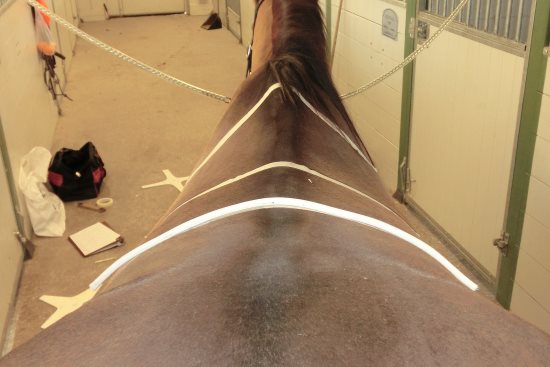
Here is a horse with a LOT of twist in his back. He has narrow withers but is very broad across the loin, so there is a large change in angle from front to back.
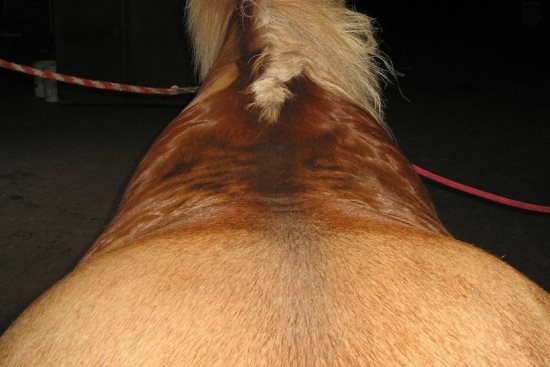
Here is a horse with very little twist in his back. He is flat at the front and flat at the back!!
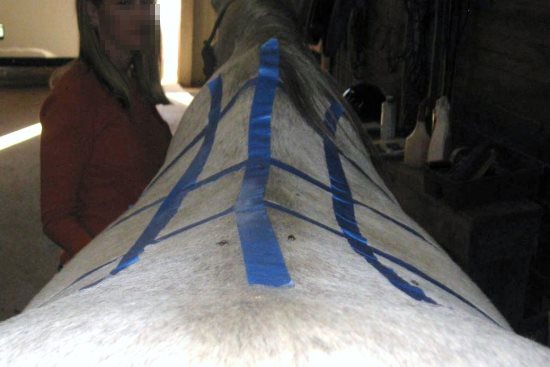
This horse also has less twist than what we commonly see. He just doesn’t flatten out over the loin like most of the Quarter Horse types that we usually build for. This one is an Andalusian.
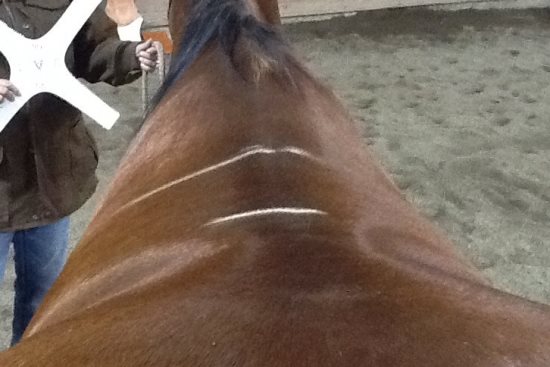
This is more our “normal” QH type of twist. I am starting to think, though, that what we see as normal in our QH dominated client base is actually an aberration in the equine world. The quarter horses we see tend to be quite broad across the loin. When we get in back drawings or DL numbers from other breeds, they often have much less twist – their loins are not as broad compared to the wither area. So our “normal” is probably not “normal” in a lot of areas of the world or segments of the horse population. Interesting to keep track of anyway.
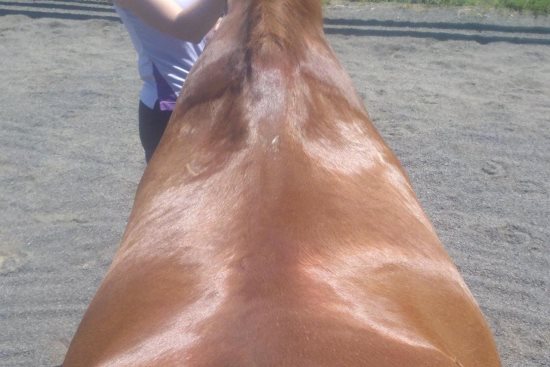
And the last thing that may show up from this view is muscle damage and atrophy or other abnormalities. You can see the hollows behind the shoulder blades on this horse. This is not normal. This is severe damage.

This older horse has a very crooked spine which shows up when you look directly from the back. We have seen this in pictures of a few other horses, though this one is most dramatic. There are probably a lot more horses out there with crooked spines, either acquired or congenital, than we recognize. After all, how many people do you know that have some sort of abnormal “curvature of the spine”? Why wouldn’t horses?
So that’s it from behind. In the last section, we will look at horse’s backs at an angle to see what we can see.
